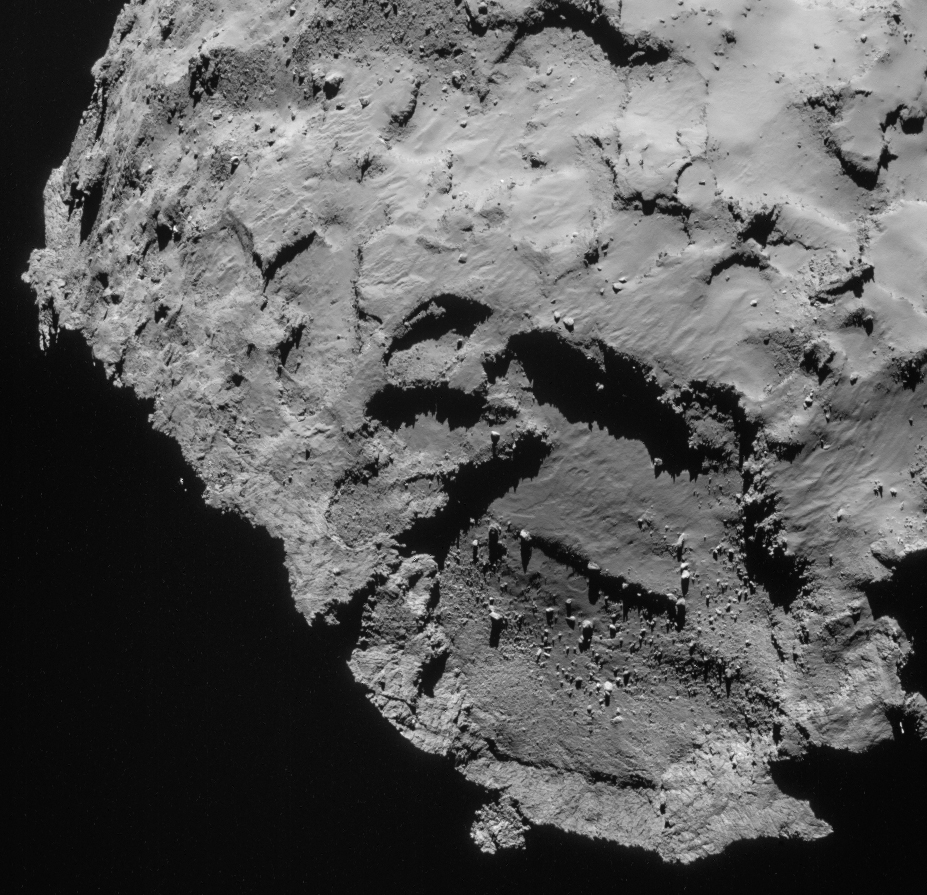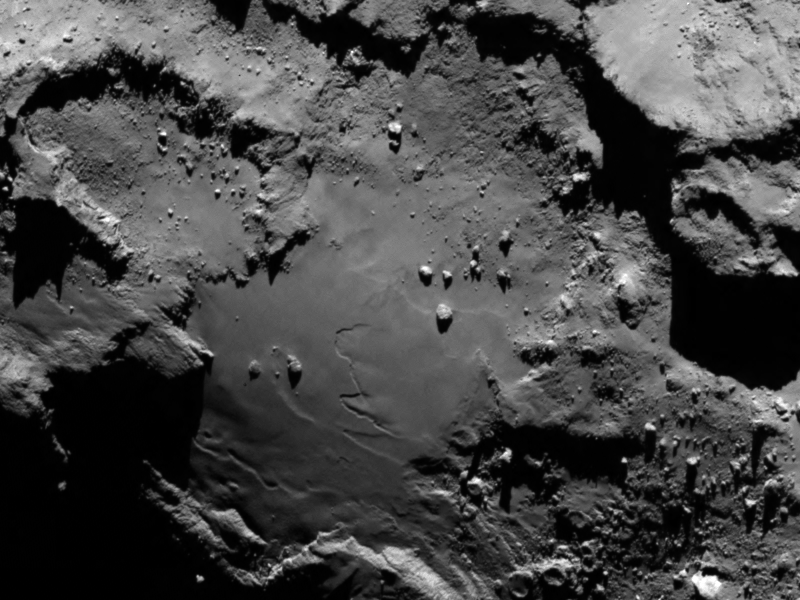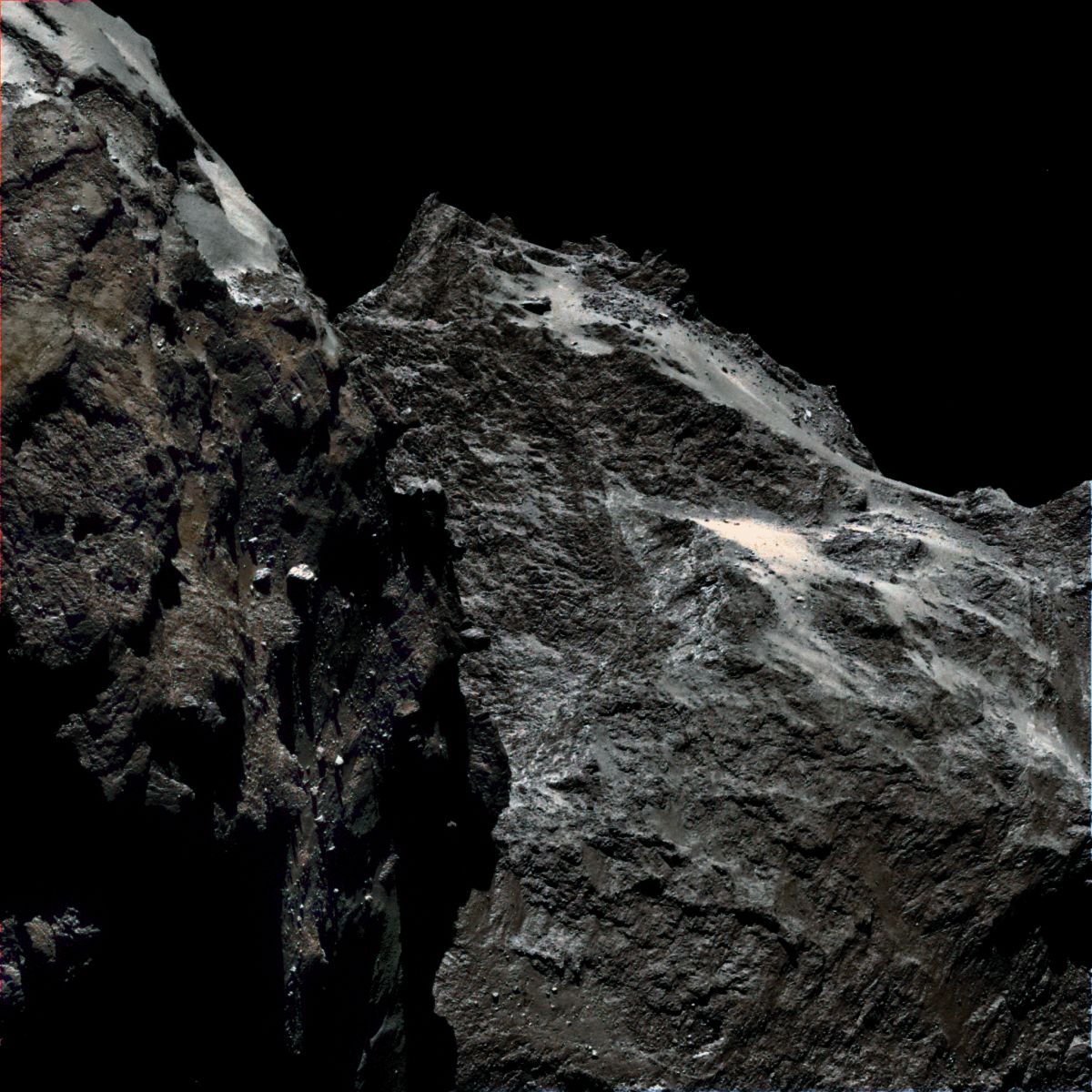
You are here
- Home
- Landscapes on a Comet
Landscapes on a Comet
by David Rothery and Matt Balme, The Open University
As the stunning images of 67P became available, we in the planetary environments group at the Open University (who have no official affiliation with the Rosetta team) became captivated and intrigued by what we saw. We are used to using spacecraft images to help us decipher landscapes on planets and their moons, and we are well-aware that as you get closer and see things in more detail you sometimes have to revise your interpretation of what you see. Landscapes on a comet are in principle no different. We just have to remember that scales are smaller and gravity is much weaker than on anything else except small asteroids.
The landscape of a comet experiences strongly varying conditions as its distance from the Sun varies, and so it is being continually re-sculpted by escape of volatiles (ices), which must either undermine from below or blast away into space any non-volatile (rocky or carbonaceous) material that gets in the way. This sounds dramatic, and we look forward to observing changes that take place as 67P draws ever close to the Sun. However, apart from a shorter timescale, what happens in a comet is principle no different to those landscape changes on Mars and Mercury that are driven by volatile escape or migration, and with which we are more familiar.

2 km wide view of landing site J, where the Philae lander is expected to touch down on 12 November. Credit: ESA/Rosetta/NAVCAM
So, what do we make of the terrain on 67P so far? Most obviously, there are no definite impact craters. This is no surprise on a body that loses material every time it comes close to the Sun, and so the surviving surface is too young to preserve the pock-marks of ancient collisions. What is surprising though is that we don’t see any definite ‘blast-holes’ through which jets of gas escaped last time 67P came close to the Sun. Maybe the previous set of these collapsed, or somehow lost their form as activity waned, and we will see a new set being made as the comet warms up. Also, there are a lot of ‘rocks’ or boulders sitting on the surface – although it’s too early to tell whether these blocks are made of icy or rocky material – and lots of areas that are rugged and rough, while other appear smooth in the images we have seen so far. Could these areas be dusty or sandy? We look forward to seeing higher resolution images that might offer insights into why the surface is so diverse.

Credit: ESA/Rosetta/MPS for OSIRIS Team MPS/UPD/LAM/IAA/SSO/INTA/UPM/DASP/IDA
Among the aspects that intrigue us are hits of layering that can be made out both in the ‘smooth’ areas and in the rugged areas. Are these layers real? How were they made, and what processes expose their edges at the surface? What makes the spines and spires that can be seen when looking at the limb (edge) of the comet from certain directions? Are these stable, or will they collapse?
Most of the publically-available images so far are from Rosetta’s NAVCAM (its navigation camera), but a few higher-resolution from OSIRIS (the Optical, Spectroscopic and Infrared Remote Imaging System) have been released, such as this one. Enthusiasts on the web have colorised it to give a realistic impression of the low albedo (poor reflectivity) of the surface. It may be mostly ice inside, but the surface is pretty filthy.

A colour image from Rosetta’s OSIRIS camera. Part of the ‘body’ of the comet is in the foreground. The ‘head’ is in the background, and the landing site is out of view on the far side of the ‘head’. From http://buff.ly/1ptZhjZ Credits: ESA/Rosetta/MPS for OSIRIS Team MPS/UPD/LAM/IAA/SSO/INTA/UPM/DASP/IDA
Contact us
Any media enquiries should be directed using the links below:
The Open University
Science and Technology Facilities Council
jake.gilmore@stfc.ac.uk
http://www.stfc.ac.uk/mediaroom